A project of railway cooperation between Thailand and China was officially launched on 19 Dec. 2015, marking an important milestone in both bilateral cooperation and the Thai government's pursuit of better infrastructure connectivity and resulting greater global competitiveness.
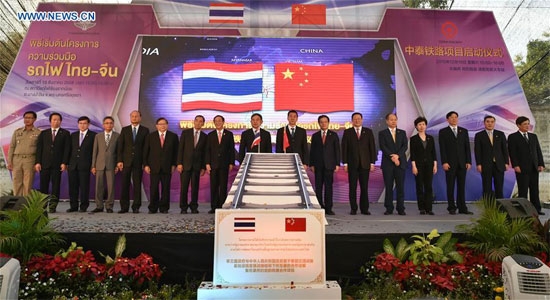
The project, Thailand's first standard-gauge double-track railway line, was launched at Chiang Rak Noi Station in Thailand's central Ayutthaya province, where the future Operations Control Center of the project will be located.
The 845-kilometer railway line, which is divided into four sections, will pass through 10 Thai provinces, including Nong Khai, Nakhon Ratchasima, Rayong, Khon Kaen, Chon Buri and Saraburi. It will use 1.435-meter standard gauge with trains operating at top speeds of 160-180 kph.
Thailand-China cooperation in railway development will help Thailand make better use of its geographic advantages as a land transportation hub, create job opportunities, raise the income of Thai people, cut transportation costs and promote economic growth, Governor of State Railways of Thailand (SRT) Wutthichart Kalayanamitr said at the launching ceremony.
Thai Deputy Prime Minister Prajin Jantong called the kickoff of the railway project "a good start" of the two countries' cooperation in transportation, saying it would improve the living standards of Thais, boost the competitiveness of the Thai economy and further propel the economic growth of counties and cities along the railway line.
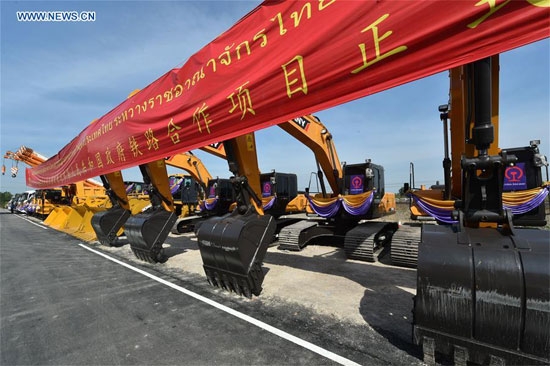
Chinese Premier Li Keqiang
Li said in his message that the launch of China-Thai cooperation in railway construction meets the needs and common interests of development of both nations and is of important significance to promoting regional interconnectivity and mutual access.
Currently, Thailand's railway mileage totals 4,043 kilometers, including 3,685 single-track lines, with the average speed of passenger trains at 60 kph and that of freight trains at 39 kph.
The SRT is stepping up efforts to develop all kinds of railway projects, including constructing seven meter-gauge double-track railway lines from 2016 to 2021 and seven more afterwards.
The Strategic Framework for Development of Thailand's Transportation Infrastructure 2015-2022, which is formulated by the Ministry of Transport, has aimed at a rapid and efficient railway network so as to achieve better connectivity between Thailand and other ASEAN countries, reinforce Thailand's position as a regional hub and seek more development opportunities.
It was under the Strategic Framework that Thailand and China inked a Memorandum of Understanding (MoU) on railway cooperation on Dec. 19, 2014.
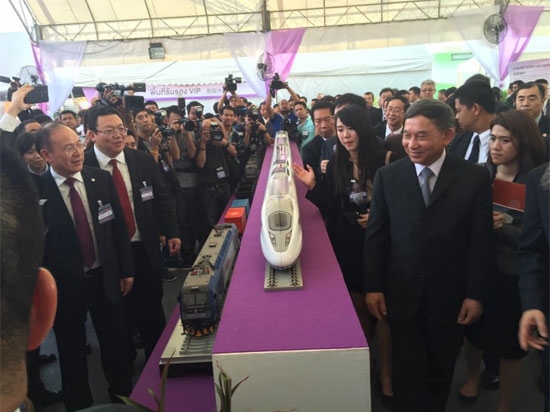
CRRC president Xi Guohua attends the ceremony and introduce CRRC to Deputy Prime Minister Prajin Jantong. Deputy Prime Minister Prajin Jantong is very interested in CRRC products.
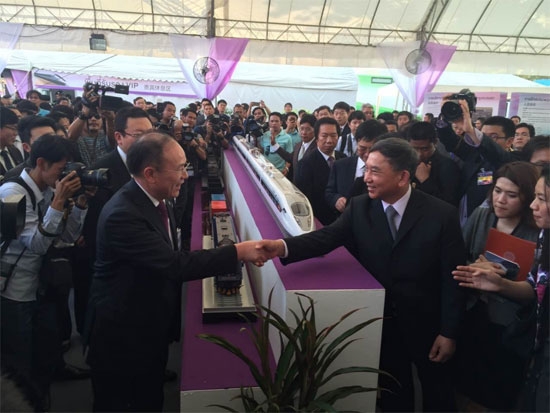
Up to now, CRRC have supplied over 1,200 rolling stock for Thailand including locomotives, coaches, LRVs and wagons.
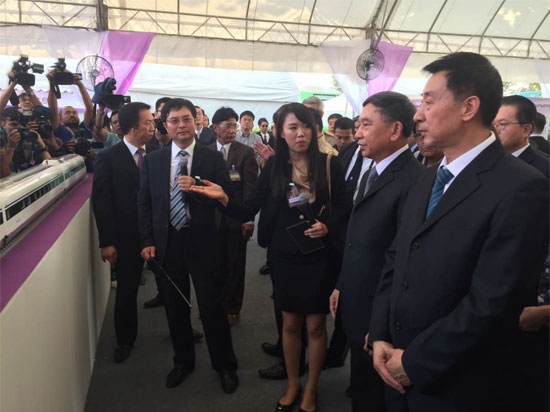
The Thai government has always been supporting and promoting the Thailand-China railway project, and wishes it to be quickly implemented and railway lines inside Thailand to be connected with those in the southern part of China as soon as possible, Thai Transport Minister Arkhom Termpittayapaisith said.
The Thailand-China project will not only be an important section of the Kunming-Singapore Railway, but also part of the preparations for ASEAN economic integration and a bridge that connects economies and peoples, Arkhom noted.
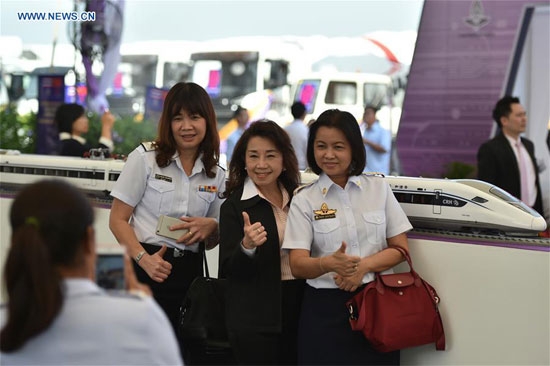
The railway project will use China's technology, standard and equipment, with the Thai side responsible for civil works, power supply engineering and part of construction materials and transportation facilities.
The Chinese side will undertake construction when it comes to tunnels, certain bridges and mountainous terrain, as well as track engineering, signaling and communication systems, traction power supply system and control system.